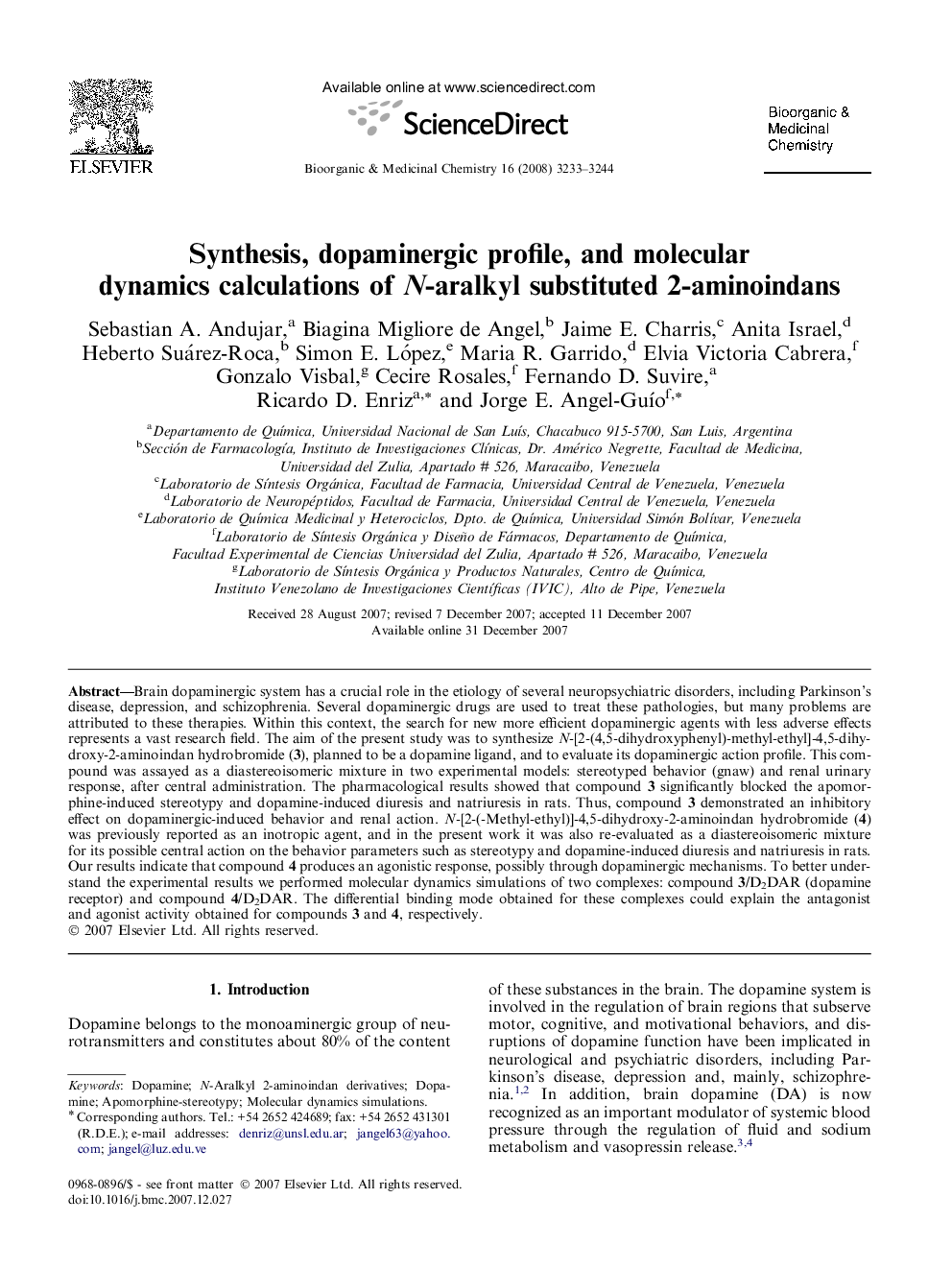| کد مقاله | کد نشریه | سال انتشار | مقاله انگلیسی | نسخه تمام متن |
|---|---|---|---|---|
| 1361185 | 981458 | 2008 | 12 صفحه PDF | دانلود رایگان |

Brain dopaminergic system has a crucial role in the etiology of several neuropsychiatric disorders, including Parkinson’s disease, depression, and schizophrenia. Several dopaminergic drugs are used to treat these pathologies, but many problems are attributed to these therapies. Within this context, the search for new more efficient dopaminergic agents with less adverse effects represents a vast research field. The aim of the present study was to synthesize N-[2-(4,5-dihydroxyphenyl)-methyl-ethyl]-4,5-dihydroxy-2-aminoindan hydrobromide (3), planned to be a dopamine ligand, and to evaluate its dopaminergic action profile. This compound was assayed as a diastereoisomeric mixture in two experimental models: stereotyped behavior (gnaw) and renal urinary response, after central administration. The pharmacological results showed that compound 3 significantly blocked the apomorphine-induced stereotypy and dopamine-induced diuresis and natriuresis in rats. Thus, compound 3 demonstrated an inhibitory effect on dopaminergic-induced behavior and renal action. N-[2-(-Methyl-ethyl)]-4,5-dihydroxy-2-aminoindan hydrobromide (4) was previously reported as an inotropic agent, and in the present work it was also re-evaluated as a diastereoisomeric mixture for its possible central action on the behavior parameters such as stereotypy and dopamine-induced diuresis and natriuresis in rats. Our results indicate that compound 4 produces an agonistic response, possibly through dopaminergic mechanisms. To better understand the experimental results we performed molecular dynamics simulations of two complexes: compound 3/D2DAR (dopamine receptor) and compound 4/D2DAR. The differential binding mode obtained for these complexes could explain the antagonist and agonist activity obtained for compounds 3 and 4, respectively.
N-[2-(4,5-Dihydroxyphenyl)-methyl-ethyl]-4,5-dihydroxy-2-aminoindan hydrobromide (3) demonstrated an inhibitory effect on dopaminergic-induced behavior and renal action. In contrast N-[2-(-methyl-ethyl)]-4,5-dihydroxy-2-aminoindan hydrobromide (4) produces an agonistic response. To better understand the experimental results we performed molecular dynamics simulations of two complexes: compound 3/D2DAR (dopamine receptor) and compound 4/D2DAR.Figure optionsDownload as PowerPoint slide
Journal: Bioorganic & Medicinal Chemistry - Volume 16, Issue 6, 15 March 2008, Pages 3233–3244